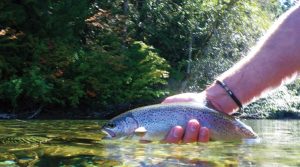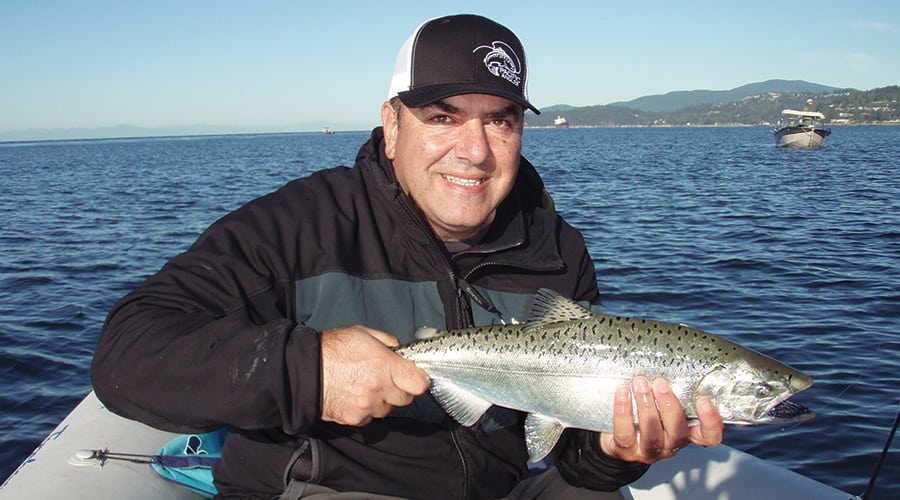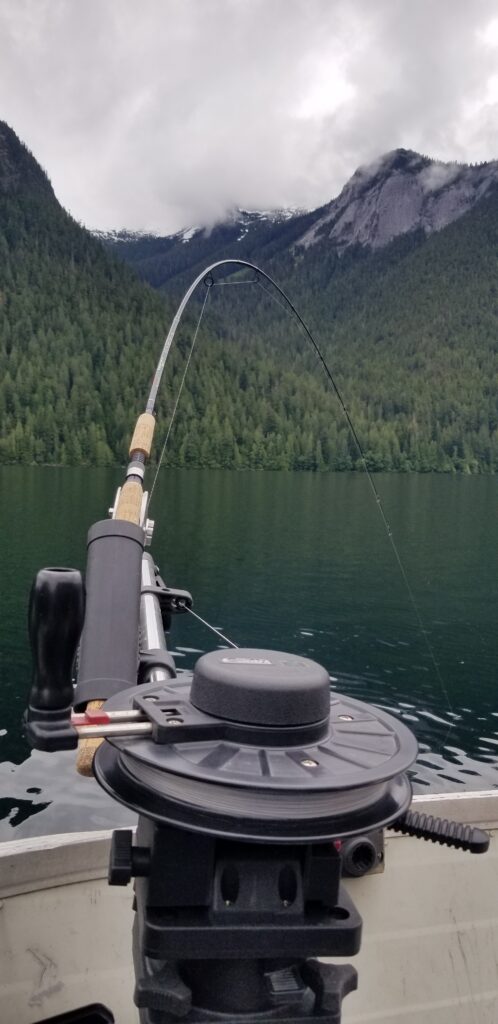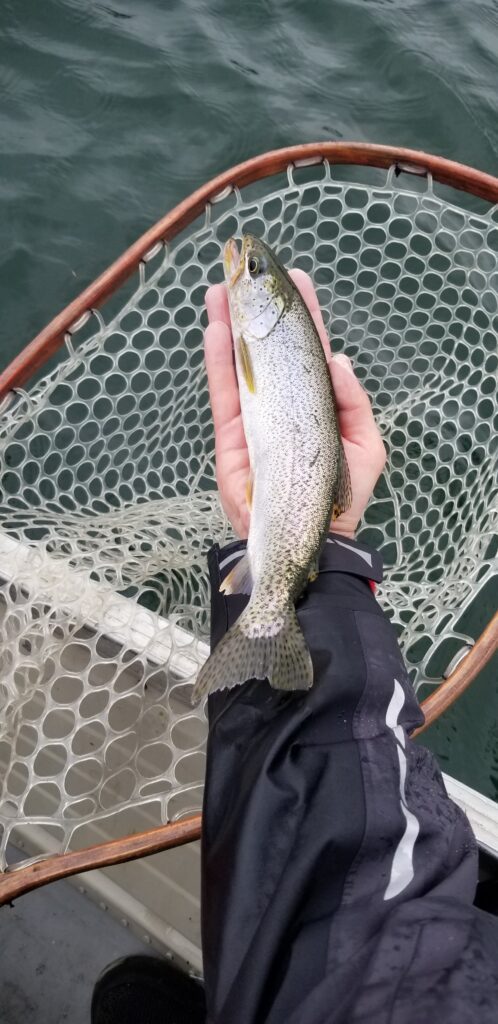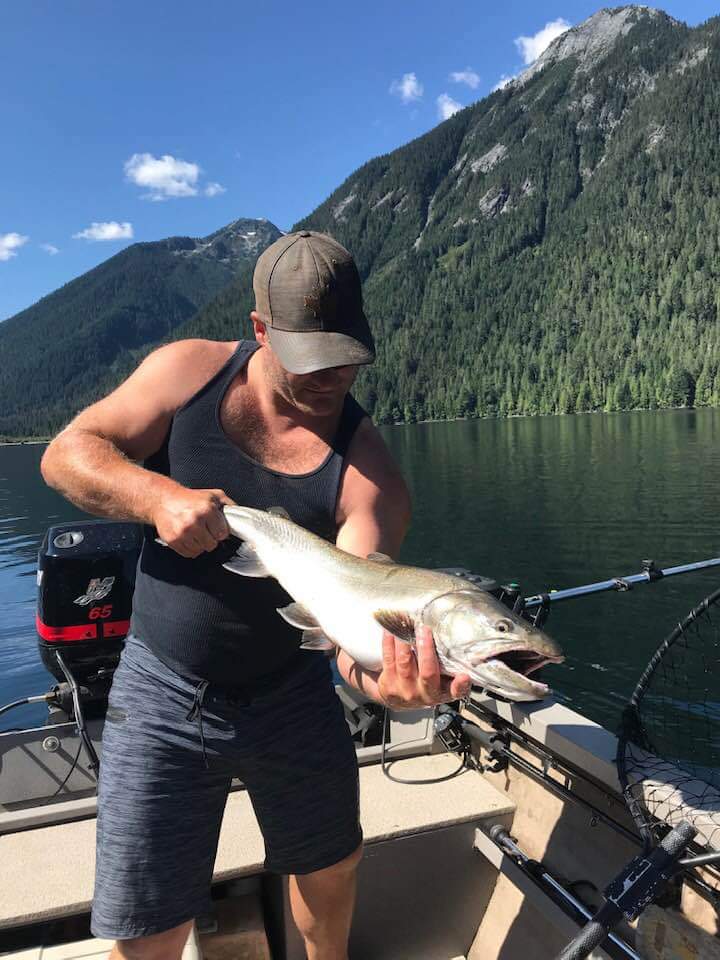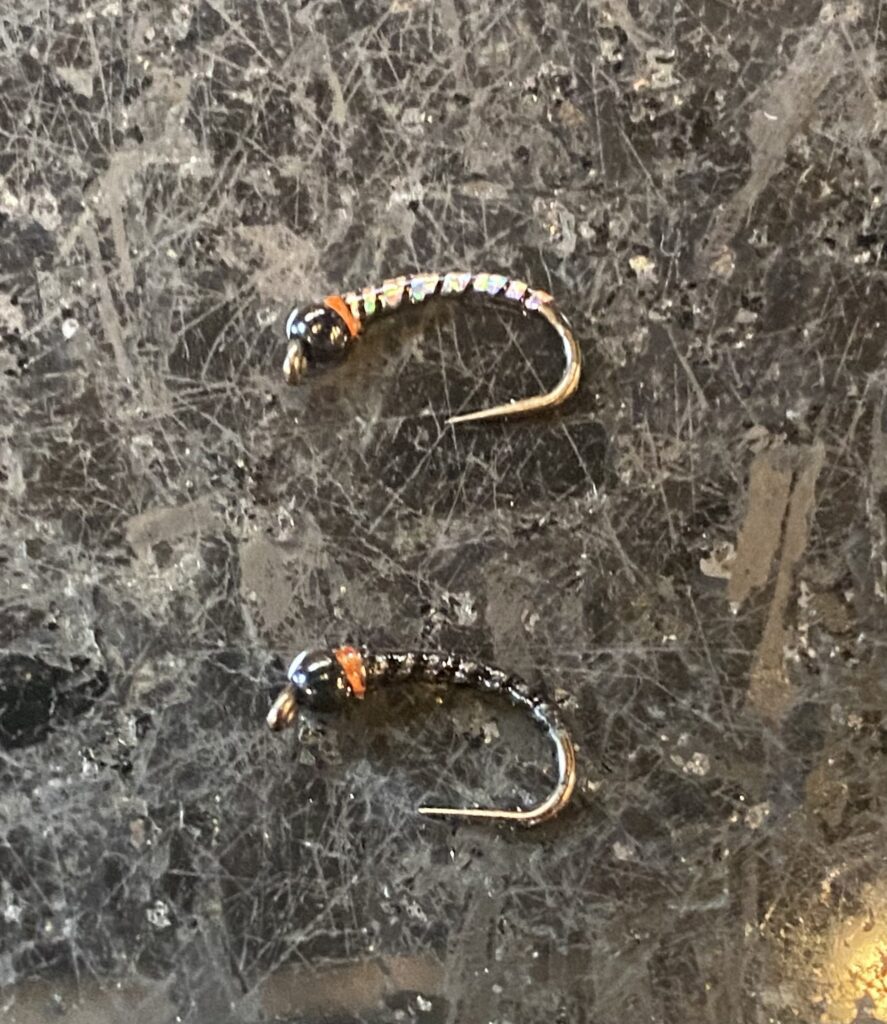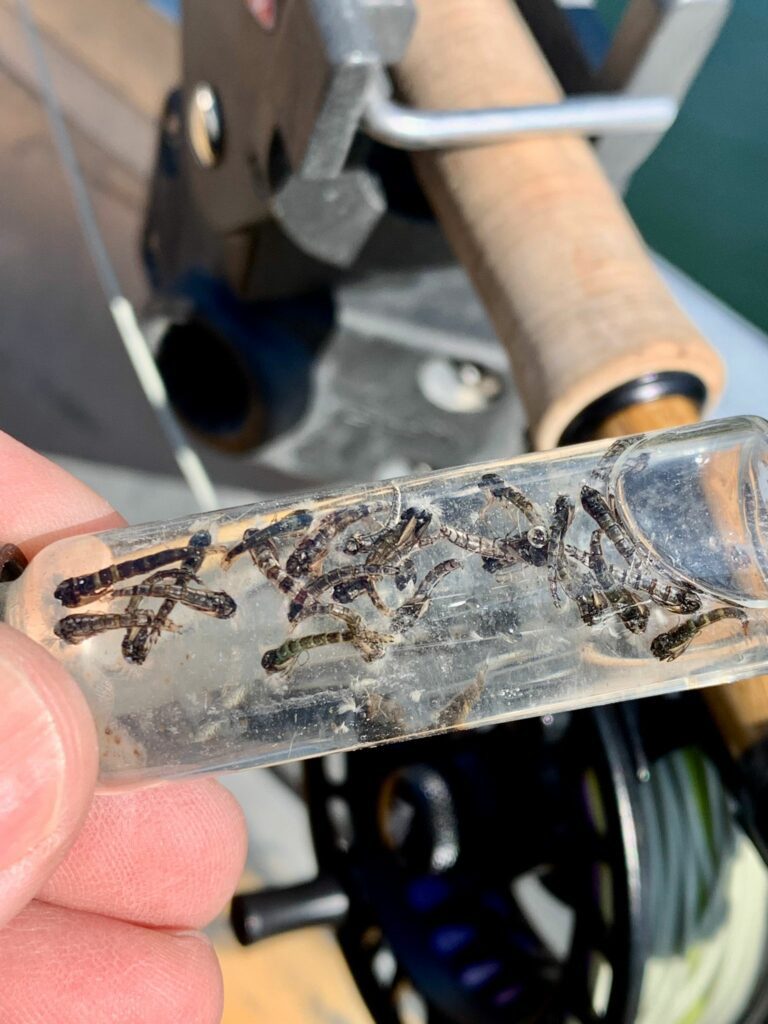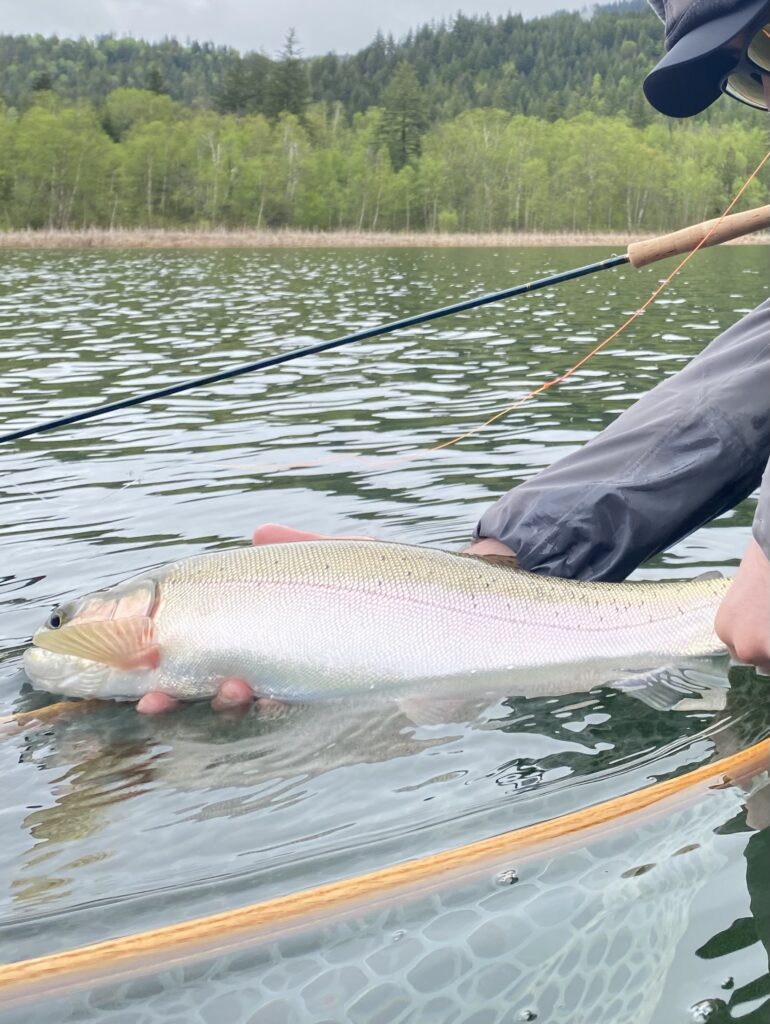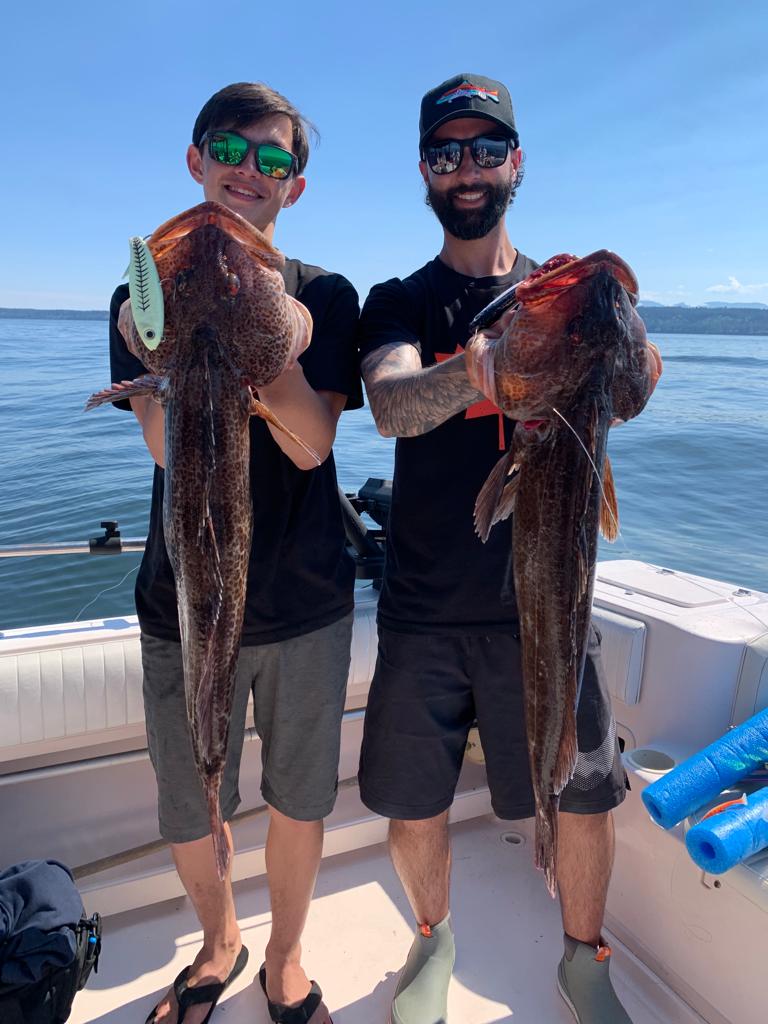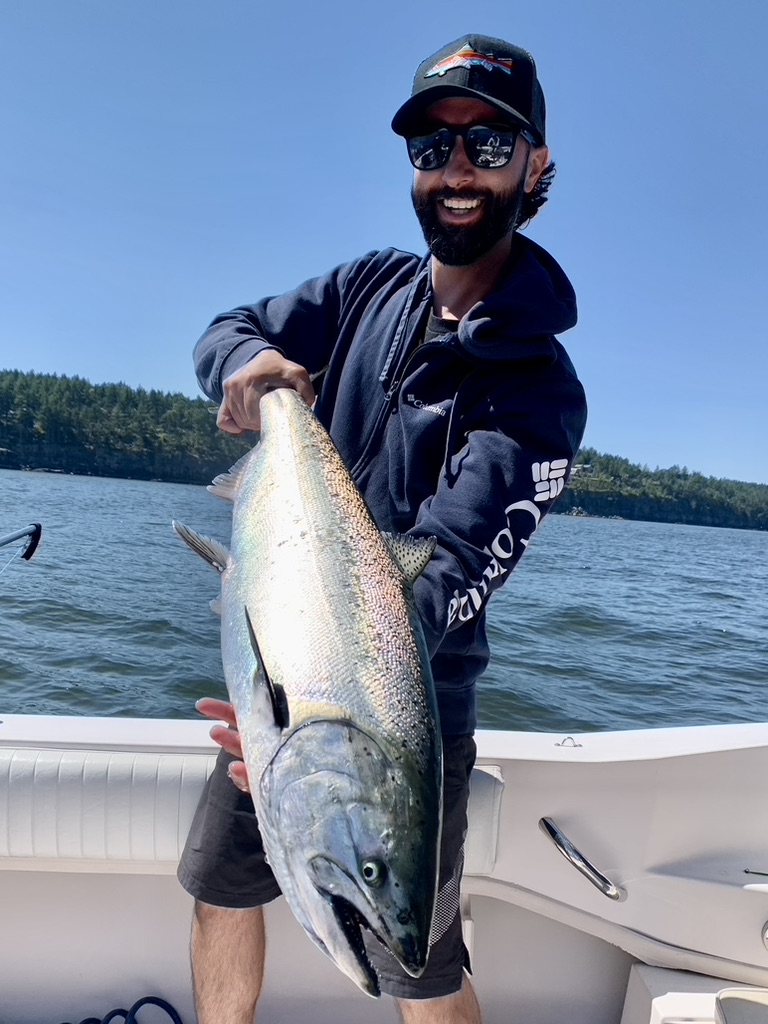OUTLOOK
Happy long weekend everyone! Looks like we’re in for another warm one, which is going to make for a beautiful weekend to be out on the water. While the heat may have some impact on river fishing due to snow melt, there are still plenty of options available. We need to keep an eye on potential wildfire risks and how the heat wave might affect fisheries in the coming weeks. But for now, it’s shaping up to be a great weekend to get out fishing.
In this week’s report, we’ll be focusing on lake fishing for both fly anglers and gear enthusiasts. Taylor has some valuable insights on how to tackle those challenging big lakes that aren’t known for fly fishing success. He’ll share gear recommendations and strategies. You will need to put in the work, but these lakes can be very productive.
For the fly fisherman, we have updates on ice-off progress and some exciting reports from the Interior, plus we talk a little bit about a hatch progression with some observations and tips on how to change your strategies over a day on a given lake. Be sure to check out the lake section of our report for all the details.
We also have a saltwater update. While chinook retention near Vancouver is still a no go, bottom fishing has been productive throughout the strait. And if you’re up for some catch and release fun, there are opportunities to target chinook north of Thrasher Rock. It’s a chance to experience both salmon and bottom fish in a single trip. Jason has all the details at the end of the report.
This week, we’ll also focus on the Capilano River. Despite its high-water levels, we are starting to hear consistent coho reports. It’s worth a scout if you are looking for something close to home!
With close to home in mind, we also have an update on local lakes. Whether you’re planning a family outing or a quick morning escape, Eric has the latest stocking reports and some helpful tips as the lakes warm up.
Matt is back with a video report where he shares some observations from past lake fishing trips, tries not to get too depressed about the chinook closures, and shares some cool flies that are worth putting in the box if you are heading to the Interior. Click below to watch the video version of the report!
If you’re heading out for a long weekend fishing trip, we are here until 7PM tonight! We have regular store hours all weekend long but will be closed on Monday.
May Long Weekend Hours
Friday May 19 | 10AM – 7PM
Saturday May 20 | 10AM – 6PM
Sunday May 21 |11AM – 5PM
Monday May 22 | Closed
CLASSES AND COURSES
Introduction to Fly Fishing
This course is specifically designed to give the new fly fisher the basic knowledge, casting skills and fly fishing strategies to effectively fish our local BC waters. This course is comprised of two sessions; 3hr evening seminar and a 3hr casting session. The dates below show the seminar date first and casting date second.
Dates: Jun 14 & 17, July 11 & 15, Sept 19 & 23
Cost: $175.00+GST
Seminar Time: 6:30pm – 9:30pm
Casting Time(s): 10am – 1pm or 1:30pm -4:30pm
Fly Fishing Trout Streams
Stalking trout on mountain streams defines fly fishing. In this course we will teach you the fundamental techniques for fly fishing trout streams; dry fly fishing, nymphing, and streamer fishing.
This Introduction to Fly Fishing Trout Streams course will get you as close to being Brad Pitt (A River Runs Through It) as you will ever be! This course is comprised of one 3hr evening seminar.
Date: June 20, 2023
Cost: $60.00+GST
Time: 6:30pm – 9:30pm
Fly Fishing On Beaches Course
This single evening 3hr seminar will cover the basic principles needed to be an effective beach fly fishermen in BC from Howe Sound to the east coast of Vancouver Island. Topics covered will include rods, reels, fly lines, flies, tides, and techniques. Andre Stepanian, the instructor for this course, has been chasing salmon on our local beaches for over two decades. 2023 is a pink salmon year in the Lower Mainland and remember, east coast Vancouver Island has a pink salmon run every year.
Date: Wednesday June 21, 2023
Cost: $60+GST
Time: 6:30PM
FRESHWATER FISHING REPORTS
Capilano River Fishing Report
It’s mid-May, and with the fluctuating water levels, the Cap is seeing some fish. Although this can be a challenging fishery, if you work hard and pay attention to the tides and water levels, it is well worth the effort.
When gear fishing, it’s best to use light to medium baitcasting or centerpin setups. Float fishing with roe, beads, or blades can be effective. Casting spoons, spinners, and small twitching jigs can also put you in the game. Be sure to adjust your presentation based on water conditions.
While float fishing is usually most effective when fishing in higher water, fly fishing slow deep pools in low water can be equally as effective.
A seven or eight weight setup paired up with a full sinking line is key to get down to the fish. Cap coho respond well to small, sparse, olive flies such as the Cap Bugger. The name of the game is sparse. When casting, roll casts are used to flick the fly out from amongst the steep canyons.
This is the time of year where you may see some steelhead kicking around. These fish are not open for retention and should not be targeted to insure highest survival rates. If you do happen to hook into one, ensure that it is kept in the water and handled with the utmost care.
On a side note, if you’re not already registered with the Cleveland Dam Safety Program, I highly suggest that you do so. You can register for phone notifications in the event of a flash flood or dam release. Remember, always keep your head on a swivel and pre plan your exit route if things go sideways.
Josh Lo
STILLWATER FISHING REPORTS
Local Lake Fishing Report
We have had 14,600 catchable fish stocked in the Lower Mainland since the start of April. Most stockings took place about one month ago, so you can still find fish to target. More recently, the Freshwater Fisheries Society has been out depositing yearling fish in the lakes in the Harrison area.
The warm weather is here, so it’s time to get out and warm up your trout skills at the local lakes. We have seen some great fish from the Sea to Sky, Whistler, Pemberton, and Harrison areas this spring. Urban lakes have slowed, but most still hold fish. We have seen many new anglers, both young and old, looking to explore these lakes, so I have a few quick tips to get started.
Beat The Heat: With the warmer days, I try to get out a little earlier to beat the heat. Some lakes offer shady tree lines, while others have a dock to relax on. Bring your hat, shades, sunscreen, and plenty of water. If you plan on harvesting your catch, bring a cooler and ice.
Have a Few Tricks in the Creel: If you are fishing with spinning gear, have a variety of small spoon lures, float fishing tackle, and bottom fishing tackle. If you are fly fishing, you can fish balanced flies and chironomids under an indicator or cast and strip smaller pumpkin head and nymph-style flies. Look for clear sinking and heavy sink lines for a better shot at deeper fish.
Location: Most lakes will have recognizable places that you can fish from—docks, trails, boulders on the shore. Look for locations with drop-offs or cover. Areas where a creek or river empties into the lake can also be productive. If you’re fishing with the family, open spaces are best. The dock can be a great starting point. If you have little ones, I recommend PFDs on the dock.
Bring a Bigger Boat: I really think the best way to tackle a local lake is with a small personal fishing machine. Light float tubes can be hiked into lakes. Pack rafts and pontoon boats can accommodate motors or casting platforms. You can even fish from a paddleboard. Inflatables are awesome for anglers looking to take full advantage of this fishery. The good old family canoe can be a scenic way to enjoy a little trolling of gear or flies.
Have a Multi-Species Day: Many trout lakes have additional species of fish you can target. Sunfish, bass, and carp are abundant in Metro Vancouver and Fraser Valley systems. Try a small artificial grub-jig or micro worm under a float to get the kids hooked on crappie fishing or get into fly fishing and enjoy topwater action on small foam poppers!
We have all the gear you need to make the most of your family time on the water, from Spider-Man kids combos to G. Loomis ultralight setups. Respect your fishing environment and fellow anglers. Have fun out there.
Eric Peake
Big Lakes – Big Trout
With pretty much all of the local rivers either closed to angling or blown out due to freshet, anglers who don’t want to drive 3+ hours to the Interior may be looking for a different fishery to try out. Luckily for them, there are a ton of angling opportunities within a reasonable drive of Vancouver, with one of my favorites being the trout, char, and kokanee fisheries in some of the Fraser Valley’s larger lakes.
If you’ve got a small boat and some downriggers, you have a bunch of cool local fisheries at your fingertips, many of which don’t get much angling pressure. The larger lakes in the area, such as Chilliwack, Chehalis, Stave, and even Harrison, can all offer some reasonably good fishing for trout and char, while Alouette and Kawkawa offer decent kokanee fisheries. I’ll be focusing on the trout/char fisheries today but stay tuned for an in-depth local kokanee article next week.
Before I get too far into this, I’m going to mention one thing: the trout/char fisheries in the big lakes can be a lot of fun, but they are also somewhat technical and not especially productive; you will probably not be putting up double-digit days of big rainbows or bulls. My best day on Chilliwack Lake, for example, was four good-sized bulls and a couple of smaller rainbows and cutties—a decent day, but not the 20+ fish day that a good Interior lake would regularly produce. The few fish you do encounter, however, have a pretty good chance of being relatively big; 8+lb bulltrout are not all that uncommon in a few of the lakes I mentioned, and there are retention opportunities for trout and char in most of the above lakes, if that’s what you’re into.
If you’re still reading this after all that doom-and-gloom stuff, then you’re still interested, so I’ll get on with how to actually fish these big, deep coastal lakes… it’s quite simple, but simple doesn’t always mean easy. The most effective and efficient way to fish these big lakes is to troll. Downriggers are highly recommended, but you can fish effectively with a Deep Six diver, or something like that—downriggers let you target specific depths with little guesswork, which can be quite beneficial for larger fish and is almost a necessity for kokanee. To that end, a decent fish finder is also an extremely helpful tool—you’ll be able to find out what depth the fish are at, then set your downriggers to that depth and maximize your chances of hooking up. Simply trolling down the middle of the lake can produce fish from time to time, but I’ve always had better success trolling a bit closer to shore, often near drop-offs. Pay special attention to creek mouths or inflows since they bring in nutrients and fresh, oxygenated water that will attract both smaller and larger fish. In many ways, trolling in the big lakes is quite similar to trolling for salmon in the ocean… just with smaller gear, in a smaller body of water for smaller fish. If trolling isn’t your thing, you can anchor or drift near drop-offs, inflows, or other fish-attracting spots and cast lures, vertical jig, or fish bait under the boat. While this is usually less productive than trolling, it can definitely produce fish.
As mentioned before, you’ll be targeting some fairly large trout/char in the big lakes, so an ultralight spinning rod might not be the best rod to bring- especially if you’re trolling with a downrigger. I personally use a 7’6” light-action Kokanee rod for trolling, though I’ve been undergunned on a few big bulltrout in the past . A 7’-8’6” medium-action rod would be a better bet; spinning rods/reels do work, but a level wind or single-action reel would be better- spinning reels are notorious for twisting line when trolling. I personally use a 7/8wt. fly reel spooled with 12lb. mono as if it were a mini mooching reel, though some might consider this to be sacrilege. A 6’-7’ light-action spinning rod is great for casting lures, jigging or fishing bait, and is usually worth having on the boat, especially if you get bored of trolling. I usually bring a good assortment of trolling spoons (anywhere from small Mini-Gs all the way up to 4” Salmon spoons for big Bulls), plugs and hard-baits, alongside a few dodgers like the Gibbs Dogtail dodger, a gang-troll or two and a bottle of scent. Bring a wedding band or two; they work great on smaller trout, for when the big ones don’t want to cooperate.
The single biggest factor that can make fishing a large lake difficult is the size of the lake itself-the bigger the lake, the more places the fish could be… this is why trolling is usually the most effective way to fish them, since you can cover a lot of water to find fish. Another factor is the diet of the fish in the lake- the big coastal lakes lack the necessary nutrients to sustain large insect populations, so the fish in them usually rely on other fish as their primary food source. As such, dangling a chronie in Harrison Lake is a laughable endeavor; you’re going to want to fish something that replicates forage fish, hence the gear described above. Using a dodger or gang-troll in combination with your lure is usually recommended and can help draw in curious fish from farther away. Yet another factor that can contribute to difficult fishing is the weather; specifically, the wind- the local big lakes are prone to developing alarmingly strong winds, especially in the afternoons. As such, owners of small boats will want to check weather forecasts before heading out. Getting caught at the far end of Chilliwack Lake in a small boat when the winds whip up is not advisable, nor especially enjoyable… I’m speaking from experience here.
Because the large coastal lakes are glacier-fed and quite deep, they stay cold all summer long- so the fishing remains pretty consistent, even through the dog days of summer. Another positive is that, because they are not the easiest fishery, the fishing pressure is often light, so crowds of anglers are not an issue… and even if they were, it’s not like there’s a shortage of space on a big lake. While they aren’t great for putting up big numbers of fish, they are good for producing a few good-sized trout or char and can be great for a day-trip… there’s always the chance of encountering a trophy-sized rainbow, cuttie or bull.
Taylor Nakatani
Interior Lakes Fishing Report –Chasing the Hatch
We are seeing lakes in the 4000ft range starting to ice off and lower elevation lakes are fishing consistently. With the heat, we are starting to see hatches a little deeper than normal for the end of May. Don’t be surprised if you need to go to the 16-20 ft range as things heat up.
We have started to even hear the odd report of may fly hatches, but it is still a little early for anything consistent.
Now that we are seeing consistent warm temperatures, we wanted to geek out a little on fishing through a hatch progression. This is something that new anglers sometime fail to understand.
What is hatch progression? As we all know hatches are triggered by temperature and over a day on the water the different bugs hatch and with it the preferences of the fish will change. The best anglers will understand this and can anticipate changes, stay in the zone and shift as the bugs change.
Early in the morning on most lakes you will not see chironomids. When you first get onto a lake it’s time to explore and find a good spot. Wind drift or troll with general attractor patterns. Boobies’ scuds and leeches are great for this time of day.
Once you have found a good spot to anchor don’t just drop anchor and sit. Scout that specific area to understand the depths and make sure you can anchor your boat with good angles to cover the area. Ideally drift over the area a few times. Watching your sounder for fish but more importantly watch your sounder so that you know the changing depths left, right, in front and behind your boat.
Once you have this intel mapped out in your head drop anchor and make sure you have good casting angles with the wind. Don’t panic or rush this. Wasting time before the hatch starts to get a good angle and setup right will pay off when things pick up in the mid-morning.
Ok, now that you are set up, run the attractor patterns like scuds, leeches and blobs. Play with depth, play with the directions you cast knowing the different depths around the boat and adjusting your indicator or retrieve speeds accordingly. Don’t panic if you are not catching fish. Sometimes the hatch doesn’t turn on until well into the morning and if weather or wind is playing games it might only turn on for brief flurries.
As the hatch starts obviously watch what is on the water. Match the size and color of chironomid as best you can but I will still usually have one attractor pattern out.
Once you catch a fish, get a stomach pump. Look at what is in the pump and try to determine what the last thing the fish ate. If the chironomid is still wiggling that is a good indication. You will also see things in the pump that look a little washed out or “old”. These items might have been in the back of the fish’s throat for a while so don’t put too much stock in washed out old looking bugs in the first pumps of the day.
Now that you have some intel and have picked a close match to what you are seeing either on the water of better yet in the pump, it is time to predict how that hatch will progress. First off, the presence of gassed up (chrome) chironomids will increase as the hatch progresses. Fishing a natural drab presentation and a chrome version of the same size and same underlying colors is a good strategy.
You will sometime see the drab color produce at the beginning of the hatch and the chrome version take over as things progress.
The second thing to consider is depth. Obviously, the bugs are swimming to the surface, and it is common to see fish right on the bottom in the morning and then become suspended as the day progresses, following the bugs up in the water column. If you had a hot session with a pattern on the bottom and things turn off, start rising up your presentation. It’s common I start at 18ft and by mid day I am in the same water depth fishing 9-12 ft under the indicator.
The last thing to keep an eye out for is a new bug coming off. It is common one bug will be hatching in the morning. The fish will be keyed in on them but as temps increase a new “better” bug will start to come off and the fish will turn on to them completely ignoring the old hot presentation. I saw this last week with small green chironomids coming off and being the main focus of the fish but then my offerings stopped working. You can sometimes see this in a stomach pump. The first pumps of the day will be loaded with only one size of color and then all of a sudden you will start seeing the odd fresh larger chironomid in pumps and your original presentation will stop working. Remember what you saw in the last pump and try matching the new bug to see if the fish have shifted over to something different. This is one reason so continue to take pumps even if you have found a presentation to be working.
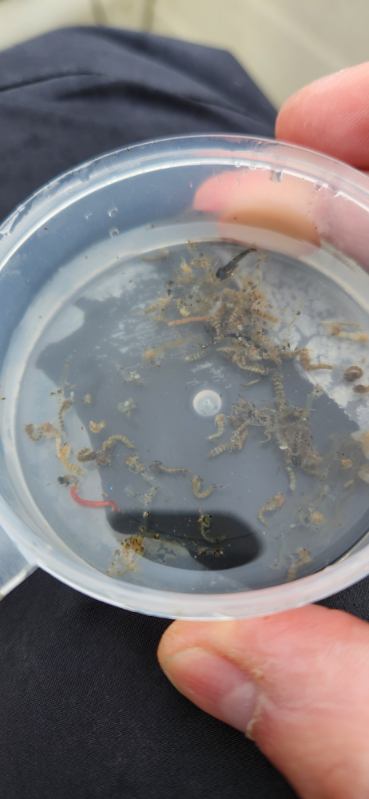
Well, we hope this gives you some ideas of how to change as the hatch progresses.
A number of staff and friends are heading farther north this weekend so we should have some more updates next week as well as some tying videos that we are working on. Make sure you stay tuned.
Good Luck this weekend!
Jason Tonelli
SALTWATER FISHING REPORTS
Vancouver Saltwater Salmon Fishing Report
We made it over to the Gulf Islands this week for some lingcod fishing and some catch and release chinook fishing. It was a flat calm day, hot and sunny, and the fish were biting. If you are looking to get out on the water, now is a great time as the bottom fishing for lingcod and rockfish is open to retention in Area 17 and crabbing is also producing well. Chinook catch and release fishing in Area 17 has also been good and is a great way to finish off the day.
Locally in Areas 28 & 29 we are fishing for chinook (catch and release) with our DNA permits and we are happy to report there are lots of chinook around, including lots of hatchery fish. Hopefully, this data will eventually result in a hatchery chinook opening.
When we were crossing the Strait of Georgia this week, we did see some salmon swirling and feeding on the surface. These were very likely coho and that is a good sign of things to come. Coho open June 1st and fishing for them usually picks up around.mid-June. Fingers crossed we get a good coho season this year.
See you in the shop or on the water,
Jason Tonelli




